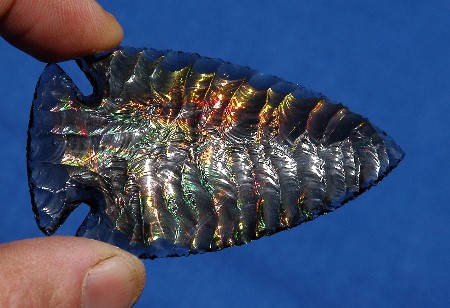

ABSTRACT
A variety of obsidian from Glass Buttes,
Oregon, named for thin layers showing various colors and known as ‘fire’
obsidian, was investigated with FE-SEM, EDS, EBSD, and optical
spectroscopy
methods. Our study reveals that the thin layers consist of mainly
concentrated
nano-sized magnetite crystals. The thin layers having a thickness of
300 nm to
700 nm give rise to brilliant colors
in reflection. The color is caused by
thin-film interference where the thin layers have a higher calculated
refractive index (n=1.495 ~1.512)
than that of the host glass (n=1.484).
Fire obsidian in the host rock.
Fig 2 in host rock
Fig 4 optical spectrum Fig 4 (large version)
Fig 5a Fig 5b Fig 5c Fig 5d (tif files - use 'save as') SEM images
Fig 6a (bmp file) Fig 6b (jpg file) EBSD patterns
Canadian Mineralogist 45, 551-557